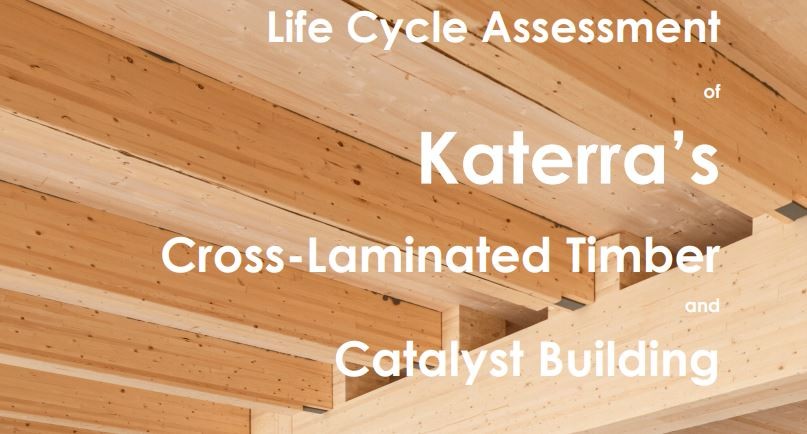Getting to Zero Carbon - Life Cycle Assessment of Katerra's CLT and the Catalyst Building
Saturday, February 29, 2020

As a vertically integrated company, Katerra controls the entire end-to-end building process. This offers us insight into the full building lifecycle and an unparalleled opportunity to address long-standing environmental inefficiencies in building product sourcing, manufacturing, construction, and operation. Katerra’s investment in cross-laminated timber (CLT) — which we believe will become the backbone for future generations of high-performance, low-carbon buildings — is a core strategy for lowering the environmental footprint of the built environment we are creating.
To celebrate an important milestone, we are proud to release a Life-Cycle Analysis (LCA) of our CLT manufacturing process and Catalyst – our first turnkey mass timber project and the first building to feature CLT produced in Katerra’s Spokane Valley CLT factory. Katerra commissioned the Carbon Leadership Forum (CLF) and Center for International Trade in Forest Products (CINTRAFOR) at the University of Washington to analyze the environmental impacts of our CLT as well as the Catalyst building in Spokane, Washington. These two organizations are the preeminent leaders in their respective fields; CLF recently released an embodied carbon calculator for the construction industry and CINTRAFOR is well known for its research to support sustainable forestry and forest products trade.
Our goal in pursuing this analysis was twofold: To better identify opportunities to reduce environmental impacts in our supply chain and improve CLT production efficiencies, and to examine the life cycle environmental impacts of mass timber at the whole building scale and identify opportunities to optimize the environmental performance of mid-rise mass timber structures.
Before diving into the LCA results, here is a brief overview of our CLT factory and the Catalyst project, see this page.